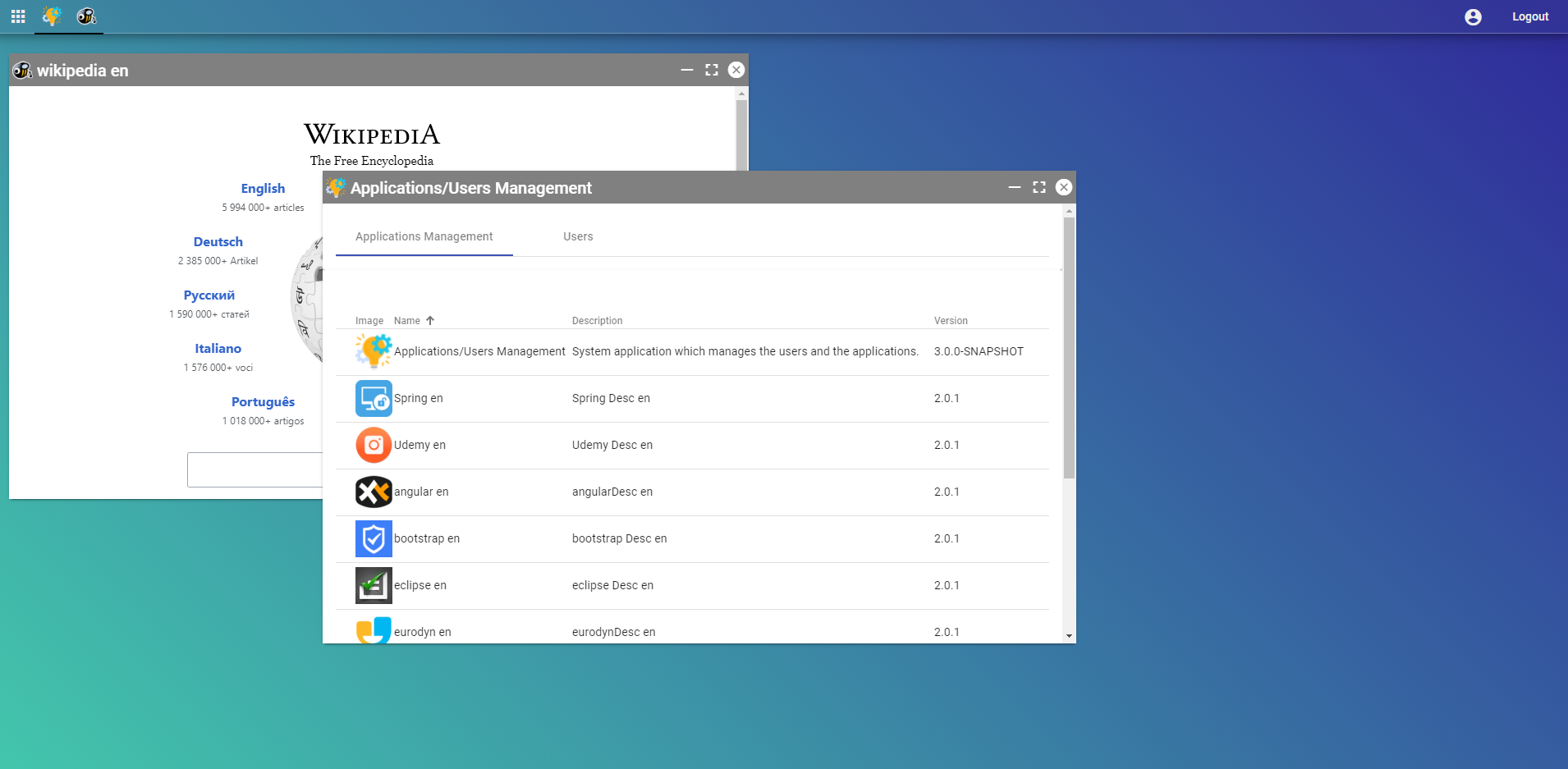By integrating your web applications with QLACK WebDesktop you are receiving the following features:
-
Application Menu
All the integrated applications are displayed under a compact pop-up menu as tiles, defined by their title and icon and can be categorized based on their defined usability (system management, communication, etc.).
-
Application Windows
Clicking on the tile of one application will lead to opening an iframe window which will display the front page of the web application and will provide you with the ability to use it exactly the same way you would do on a separate browser window.
-
Configurable Features
Each application window can support, based on the initial configuration, every common desktop application feature, i.e. resize, minimize, maximize, drag, close and having multiple instances at the same time.
-
Μessaging System
QLACK WebDesktop can be also used as a messaging broker, which assists the exchange of messages between your application with the user of a custom JavaScript/Angular library.
-
Central Authentication
QLACK WebDesktop can be integrated with SSO and LDAP providers, in order to handle the authentication and authorization steps for the integrated applications, in case these require security levels.
-
Reverse Proxy
QLACK WebDesktop also operates as a reverse proxy for each integrated application, providing you ability of having your applications running in hidden and non-accessible servers.
-
Multilingual
The installation comes with a variety of translations in multiple languages, which can be easily edited or extended while your application running. Each user can select their preferred language and use it throughout all the integrated applications.
-
Easy Integration
Applications can be integrated in the system with 3 different ways, providing the option of adding new applications or editing existing ones, during the steps of deployment or on-the-fly while your system is running in production.
-
Quick Deployment
QLACK WebDesktop can be set up and deployed in less than 20 minutes, by either making use of the embedded Tomcat server or the published Docker images. The installation steps are very easy and can be followed by people with little technical knowledge.



